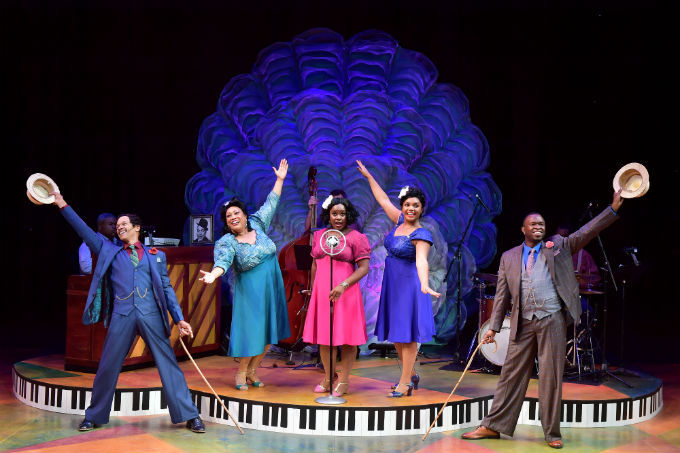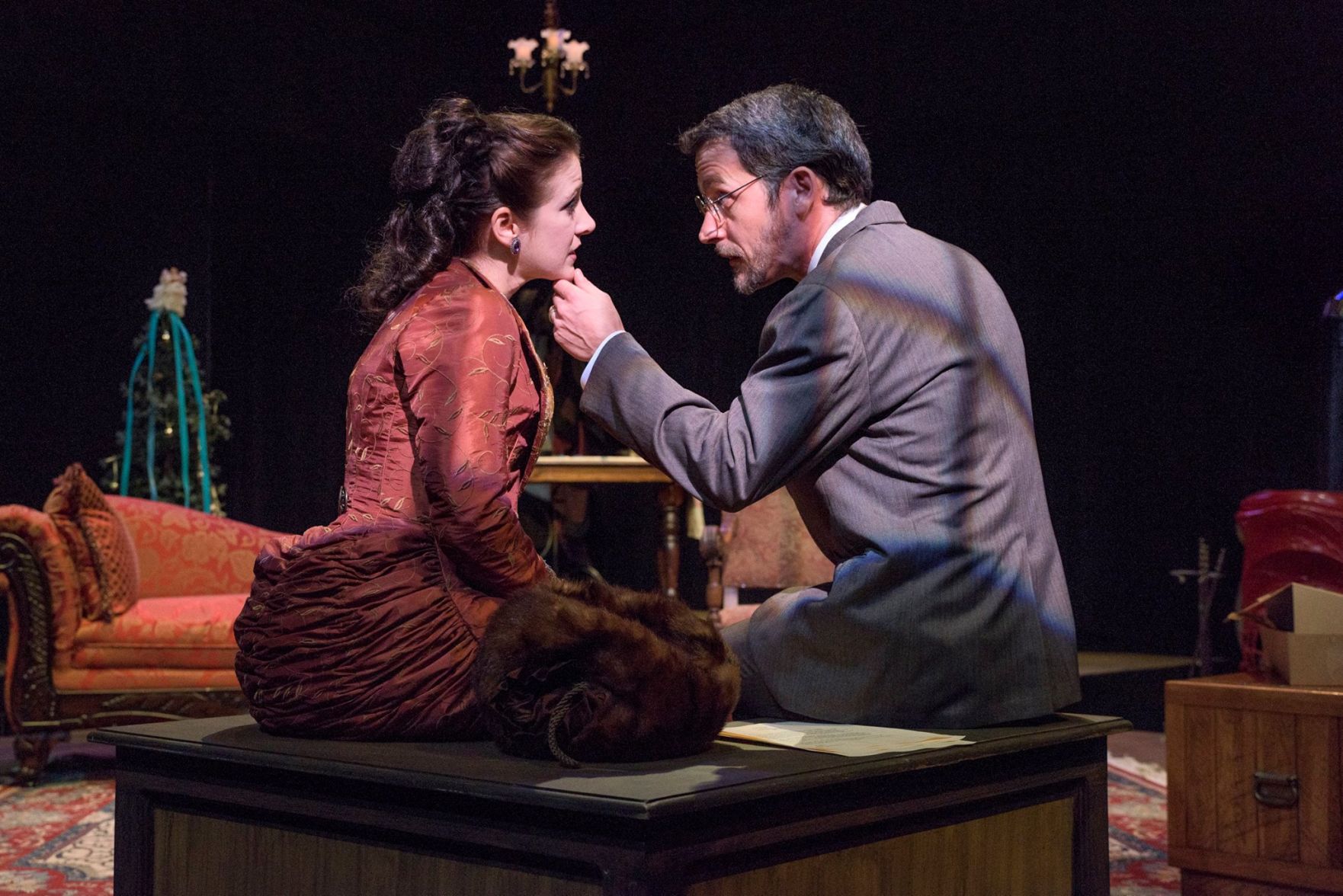Esther Teichmann’s “Heavy the Sea” at Transformer Station examines the weight of emotions and longing
By Michael C. Butz

Installation View, from Heavy the Sea, 4x3m painted backdrop, UV print painted with inks and acrylics, 125×165 cm Chromogenic print and 50x60cm toned fibre silver gelatin print. Courtesy of the artist and Transformer Station.
London-based artist Esther Teichmann brings a childhood spent in the swampy, cavernous Black Forest region of southwestern Germany to the gallery walls of Transformer Station for her show, “Heavy the Sea.” She also brings many of her family members as subjects, photographing them in those familiar surroundings.
But more importantly, Teichmann brings to the multimedia exhibition, on view at the Ohio City gallery through April 30, a skillful ability to draw in viewers through depictions of her subjects’ physical responses to moments of loss, longing and despair. In so doing, she adeptly navigates the blurry lines between autobiography and fiction, inviting onlookers to make connections.
“This is definitely a heavy show,” says Transformer Station gallery manager Caitie Moore, noting “Heavy the Sea,” the artist’s first U.S. solo show, came about in part due to San Francisco-based artist and photographer Todd Hido, a Kent native, who connected Teichmann with Transformer Station owners Fred and Laura Bidwell a few years ago.
“Heavy the Sea” occupies both of Transformer Station’s gallery spaces. In the main gallery, large chromogenic prints, silver gelatin prints, cyanotype and sculpture, all comprised mostly of earth tones, create a murky atmosphere that, coupled with the misty effect of dripping inks and acrylics over photos printed on canvas, places viewers alongside subjects to slosh through the muck — physical or emotional — around the waterways and caves she portrays.

Untitled, from Mythologies, 75x100cm Chromogenic print. Courtesy of the artist and Transformer Station.
These scenes create a world for Teichmann’s muses, many of them nude, thus stripped of any protective coverings that may defend them from their surroundings — and by extension, perhaps, their states of mind. The vulnerability with which these people are seen will feel familiar to anyone who’s coped with a significant personal loss.
Moore notes the artist’s interest in Greek mythology, which she says contributes to the exhibition’s “allegorical feel.”
Orpheus — a musician who charmed his way across the river Styx to retrieve from the afterlife his dead wife, Eurydice, only to lose her at the last minute because he turned around to see her face before Hades had permitted — figures in many of Teichmann’s pieces in which subjects’ faces are turned away from the viewer. Likewise, a boat sculpture at rest in the middle of Transformer Station’s floor is a reference to Orpheus’ journey — as well as a nod to family boating excursions Teichmann enjoyed as a child.
There’s also Medusa, whose appearance and serpentine hair turned onlookers into stone — before Perseus severed her head. Following the beheading, blood from Medusa’s head that seeped onto nearby seaweed created red coral, and seaweed and coral figure prominently in Teichmann’s body of work. In fact, upon entering the main gallery, visitors are greeted by a 13-by-9-foot cyanotype seaweed collage.
In the smaller crane gallery, looping films are projected in a nearly completely darkened environment, providing a night-and-day juxtaposition with the main gallery.

Installation View of Heavy the Sea (for Anna), 3x4m Cyanotype collage. Courtesy of the artist and Transformer Station.
Two of the films, together titled “Fulmine,” are projected on back-to-back screens. On one side, a naked female dancer continuously twists and turns on a bed, as if restlessly dreaming, and on the other, a tranquil forest setting is depicted, where the only movement comes from branches bending in the breeze. Accompanying “Fulmine” is an original composition by internationally acclaimed composer Deirdre Gribbin.
On the third screen, “Backwards and Towards (the initials inked into his arm were also hers)” shows a focused and determined canoeist making his way down a river in the Amazon during a 10-day span in which Teichmann filmed him. It’s a meditative experience.
“She created those on three separate occasions, but through the editing process, realized they had a lot of similarities,” Moore says. “The woman and the canoeist are sort of heading toward each other but they never meet, so there’s an interesting duality there.”
Somewhat similarly, much of Teichmann’s work, by her own admission, takes shape in a continually unfolding manner, not necessarily as set projects. This allows her to piece together, curate and reconfigure, but with consistencies throughout her art, such rearrangement doesn’t diminish the world she’s created in which her subjects can ruminate. Viewers of “Heavy the Sea” will be thankful Teichmann invited others to step into that world to share the experience. CV
On view
WHAT: “Esther Teichmann: Heavy the Sea”
WHEN: Jan. 14 through April 30
WHERE: Transformer Station, 1460 W. 29 St., Cleveland
INTERACT: Artist talk scheduled for 2 p.m. April 1; performances of Deirdre Gribbin’s piece for “Fulmine” by OPUS 216 from 2 to 4 p.m. March 4 and April 29.
INFO: Visit transformerstation.org or call 216-938-5429.
Lead image: Untitled, from Mythologies, 125x165cm Chromogenic print painted with inks. Courtesy of the artist and Transformer Station.











